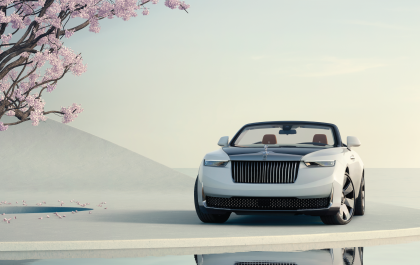Take a trip to Tajhat Palace
By Ashik Uz Zaman
Tajhat Rajbari is a historic palace of Bangladesh, located in Tajhat, Rangpur. The former palace, which now houses the Rangpur museum is situated three km south-east of the city of Rangpur, on the outskirts of town. To get there, you have to go to Tajhat village of Mahiganj.
In the late 18th century, gem trader Mannalal came to Mahiganj for business reasons and later founded the Tajhat zamindari. After Zamindar Mannalal died, his adopted son Gopal Lal Roy started managing Bahadur zamindari. In 1917, the present Tajhat zamindar’s house was completed with the relentless hard work of about 2,000 masons. The zamindar house cost around Rs1.5 crore at that time.
The Tajhat zamindar house complex has rows of trees, huge grounds, and two ponds on either side of the palace. And there are different kinds of flowers and mahogany, kamini, mango, and jackfruit gardens. The zamindar bari is similar in styling as the Ahsan Manzil in Dhaka. The top two floors of the four-story building are made from red bricks and white limestone, and house various items used by Zamindar Gopal. There are also living rooms, bathrooms, and guest rooms.
Built in imitation of ancient Mughal architecture of about 210 feet in width, the Tajhat zamindar house has 31 steps made of Italian marble. Behind the palace is the secret staircase, which is currently closed. In 1995, the Bangladesh Archaeology Department registered the Tajhat zamindar bari as a protected structure, and in 2005 shifted the Rangpur Museum to the second floor of the Tajhat zamindar house. Several terracotta artworks from the 10th and 11th centuries have found a place in the museum’s exhibition room.
The museum also contains ancient manuscripts written in Arabic and Sanskrit, including the Qur’an, Mahabharat, and Ramayana, of the time of Mughal Emperor Aurangzeb. Apart from the portrait of Vishnu of Kal stone, the museum has about 300 precious artefacts.
Tajhat zamindar bari is an amazing tourist spot in Rangpur. Those who have an interest in artefacts and the ancient eras will be fascinated coming here.

History
The palace was built by Maharaja Kumar Gopal Lal Roy in the early twentieth century. Construction took about 10 years. Maharaja Gopal Roy was a Hindu, and a goldsmith by profession. It is said that this area is called Tajhat because of its charming Taj or “crown.” From 1974 to 1991, the palace was used as a branch or bench of the Rangpur High Court, the Supreme Court of Bangladesh. President Ershad set up regional benches of the High Court of Bangladesh in different district headquarters of the country with the aim of decentralizing the judiciary, one of which was set up in Rangpur.
Later, this system was abolished after the establishment of democratic government in 1991. In 1995, the Department of Archaeology of the government of Bangladesh declared the palace as a protected structure. The government, realizing the historical significance of this architecture, moved the Rangpur Museum to the second floor of the palace in 2005. As soon as you climb the marble stairs to the museum, there are several exhibition rooms with terracotta works of the tenth and eleventh centuries.
There are several ancient manuscripts written in Sanskrit and Arabic. These include the Mahabharata and the Ramayana, along with the Qur’an from the time of the Mughal Emperor Aurangzeb. In the back room, there are several black stone portraits of the Hindu god Vishnu. Taking pictures inside the museum is prohibited. The palace courtyard has a huge empty field, rows of trees, and two ponds on either side of the palace. You can enter the museum by paying a fixed entrance fee. If you want to enter the palace premises by car, you have to pay a certain fee for the car.

Structure
The palace is about 210 feet wide and four storeys high. Its structure is thought to have been inspired by ancient Mughal architecture, as evidenced by a huge dome in the center. However, the staircase of Rajbari is different from all other palaces in Bangladesh. There are a total of 31 stairs, each of which is made of Italian marble. The whole floor from the stairs to the museum is made of the same stone. There is a secret staircase at the back of the palace. The secret staircase is connected to a tunnel that is directly connected to the Ghaghat river, but the staircase is now closed for security reasons.
The beautiful fountain of the palace is white marble and its greenish design is a bit dull in the evolution of time, but its splendor is still understandable. It is said that it was built especially for the queen.
How to get there
Various transport buses regularly travel to Rangpur from Kalyanpur, Gabtoli, and Mohakhali bus terminals in the capital Dhaka. The bus costs BDT 600 to 1000 per person to get to Rangpur. It costs only BDT 50 to go to Tajhat Zamindar’s house by rickshaw from Rangpur bus station. However, riding a bus from Dhaka to Kurigram directly goes down in front of Tajhat zamindar’s house.
Where to eat
Rangpur city has various quality food hotels and restaurants. But if you go to Rangpur in the mango season, don’t miss the famous Haribhanga mango.













